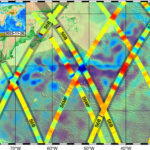Astrophysicists from Keele University, alongside an international research team supported by NASA, detected large complex organic molecules in ices outside the Milky Way for the first time—offering a glimpse into
phys.org18- Page
When the James Webb Space Telescope (JWST) began operations, one of its earliest surveys was of galaxies that existed during the very early universe. In December 2022, these observations revealed
After Christmas dinner in 2021, our family was glued to the television, watching the nail-biting launch of NASA’s US$10 billion (AU$15 billion) James Webb Space Telescope. There had not been
Autonomy algorithms developed by researchers at the University of Toronto Institute for Aerospace Studies (UTIAS) could one day make cargo transport on the moon safer and more efficient for astronauts.
Considering the immense size of the universe, it’s no surprise that space still holds plenty of secrets for us. Recently, astronomers believe they stumbled upon a kind of cosmic blast
The Orionids—one of two major meteor showers caused by remnants from Halley’s comet—will peak with the arrival of a new moon, providing an excellent opportunity to see shooting stars without
Researchers from the Xinjiang Astronomical Observatory of the Chinese Academy of Sciences have developed a hybrid deep learning model that can accurately predict atmospheric delay, a key source of error
The 85th orbital launch from the Space Coast in 2025 also marked a milestone for SpaceX with the 500th successful landing of a Falcon 9 rocket booster.
A new study led by UNLV scientists sheds light on how planets, including Earth, formed in our galaxy—and why the life and death of nearby stars are an important piece
Two bright green comets are streaming through the skies and are visible to skygazers in the Northern Hemisphere.
-
 012024 in Review: Highlights from NASA in Silicon Valley
012024 in Review: Highlights from NASA in Silicon Valley -
 02Panasonic Leica Summilux DG 15mm f/1.7 ASPH review
02Panasonic Leica Summilux DG 15mm f/1.7 ASPH review -
 03From Polymerization-Enabled Folding and Assembly to Chemical Evolution: Key Processes for Emergence of Functional Polymers in the Origin of Life
03From Polymerization-Enabled Folding and Assembly to Chemical Evolution: Key Processes for Emergence of Functional Polymers in the Origin of Life -
 04How New NASA, India Earth Satellite NISAR Will See Earth
04How New NASA, India Earth Satellite NISAR Will See Earth -
 05And Thus Begins A New Year For Life On Earth
05And Thus Begins A New Year For Life On Earth -
 06Astronomy Activation Ambassadors: A New Era
06Astronomy Activation Ambassadors: A New Era -
07SpaceX launch surge helps set new global launch record in 2024





